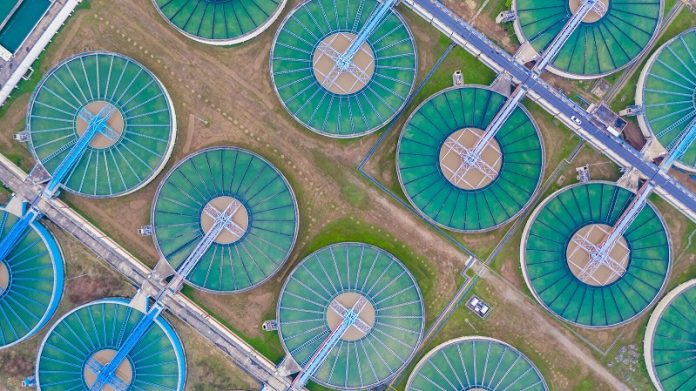A significant amount of electricity used by the water industry is consumed by electric motors. With the number of motors in the world expected to double by 2040, the sheer ubiquity of the electric motor makes it a prime candidate for energy saving, as ABB’s Martin Richardson, Water Framework Manager, explains.
The water industry is one of the biggest users of electric motors, employing them in a wide range of applications from extracting water, treating it and distributing it to customers, to pumping raw sewage and the many stages involved in cleaning it.
According to the International Energy Agency, motors account for up to 75 percent of electrical energy usage by industry in general, and in the water industry this could be even higher. If energy costs increase further, so too will the day-to-day cost of operating motors, as the industry simply cannot function without them.
The water industry has already made ambitious commitments towards the government’s stated goal of net zero and is aiming to achieve it industry-wide by 2030, 20 years ahead of the government’s own target of 2050.
But is the industry making full use of all the latest energy saving techniques? Can it do even better than it has so far in reining in energy use?
VSDs – the unsung hero of energy saving
Keeping energy use low means only using it when necessary, a feat that variable speed drives (VSDs) excel at. By controlling the speed of motors to match the actual demand of the pump, for example, they are powering, VSDs can bring a water utility significant energy savings – in fact, they can save up to 50 percent of the energy on most pumping applications, with an ROI of typically less than three to four years. Indeed, as energy prices go up, payback times actually come down.
As well as drives, there have also been major developments in motor technology that can lead to additional energy savings. An example is the synchronous reluctance (SynRM) motor, developed by ABB. Matched with an appropriate VSD, a SynRM motor can achieve substantial savings in energy consumption compared to equivalent conventional motors, along with improved reliability and quieter operation.
Rated as IE5, ABB SynRM motors have significantly lower energy losses than comparable IE2 or IE3 induction motors, with their design meaning they have no losses in the rotor. This produces a lower running temperature which, together with the simple rotor design, reduces the need for service and cuts the risk of failure compared to conventional motor designs.
Making the most of the technology available
To take advantage of these developments and maximise the potential energy savings, water companies should focus on a total cost-of-ownership approach (TOTEX) that looks at lifetime costs of the motor.
Many companies have no formal motor purchasing policy, and yet this can help to ensure that energy efficient technologies are prioritised and implemented in a cost-effective way.
A motor policy should specify a minimum standard the company will use. For example, from the 1st of July 2023, all new motors in the range of 75 kW to 200 kW need to meet the IE4 efficiency standard and IE5 where possible. IE4/IE5 options are already widely available and should be the preferred option.
Take an IE5 ultra-premium efficiency motor rated at 22kW for example, where the efficiency would be above 95%, whereas an Eff2 motor from as recently as 15 years ago were less than 90% efficient. At today’s prices, the Eff2 motor would cost around £2300 more to run in energy costs per annum. Extrapolate this across multiple motors in a facility of company and the savings and carbon reduction can be vast.
Part of a motor management policy involves deciding whether to repair or replace failed motors. Rewinding of failed motors has been a popular choice in the past, but rewinding can reduce efficiency, giving increased energy costs. It’s often more cost-effective to replace the failed motor with a new high-efficiency motor. Typically, IE5 synchronous reluctance motors will offer the fastest payback period and should be the preferred option.
Motor and drive manufacturers, water companies, OEMs, contractors and regulators can all play a part in promoting high efficiency motors and variable speed drives. Working together, they can ensure that the water industry continues to lead the way in cutting carbon emissions.
ABB recently held a webinar in partnership with Water Industry Journal, explaining how using variable speed drives to control your electric motors can be a game-changing, energy-efficient solution. If you couldn’t make it to the webinar and want to find out what you missed, visit ABB’s UK water website, where you can find out how motors and variable speed drives can play a key role in improving plant performance, while reducing energy usage and costs: https://new.abb.com/uk/campaigns/energy-productivity/water-home



